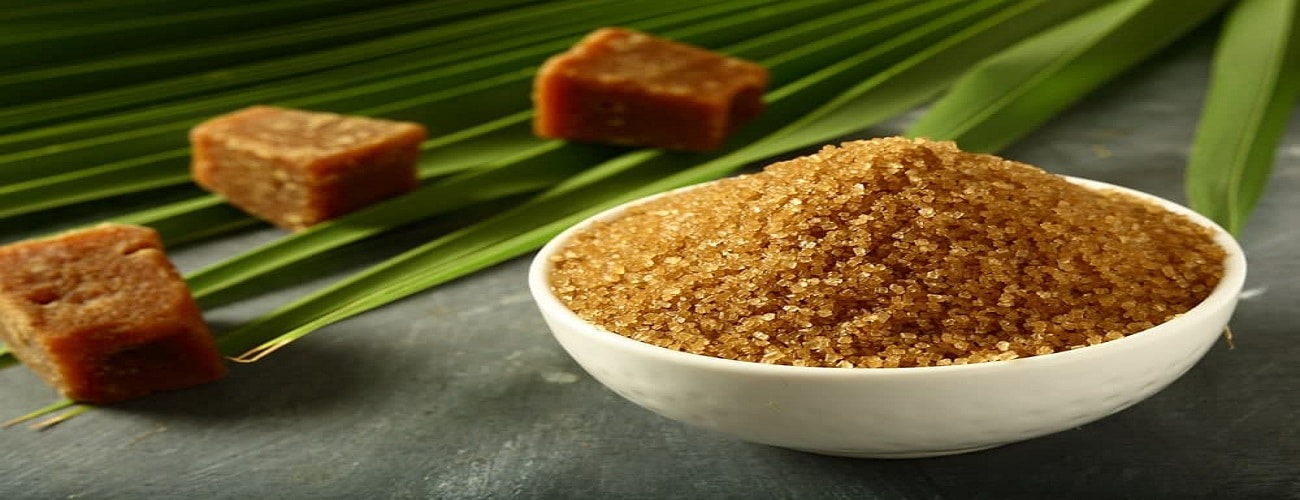What is brown sugar?

Raw sugar or brown sugar is the residue of sugarcane extract after the first processing to remove molasses. The resulting crystals still retain some molasses, which causes the sugar crystals to take on a light brown color. Since the contaminants are still present in the form of fibers and mold, the sugar is further processed into sugar and table sugar.
Unlike granulated sugar, raw sugar has large crystals that have not been bleached, so the resulting sugar has a warm brown color and nutritional value. For more information in this field, stay with us in the article of Jahan Chemistry Physics magazine.
What is raw sugar or brown sugar?
Raw sugar is prepared by evaporating sugarcane juice just like white sugar. This substance is made by boiling the sap of the sugarcane plant and centrifuging it to remove some molasses and then purifying it a little. This type of sugar is less chemically processed than white sugar and is usually brown or yellow in color. Types of raw sugar include muscovado, turbinado and demira.
How many calories does raw sugar have?
All sugars have approximately the same number of calories per gram of weight. Calorie count may vary by teaspoon because the texture of this sugar is sometimes heavier and teaspoon is a measure of volume, not weight.
For example, one teaspoon of turbinado sugar has 4.6 grams and 18 calories, one teaspoon of granulated white sugar has 4.2 grams and 16 calories, and one teaspoon of dark muscovado has 5 grams and 20 calories. has it.
Per 100 grams, turbinado contains 399 calories, dark moscado contains 384 calories, and light moscado contains 395 calories. For comparison, a 100 gram serving of granulated white sugar is 387 calories.
Nutritional value of raw sugar or brown sugar
Sugar is almost 100% carbohydrate – regardless of whether it is raw or highly refined. Raw sugar may sound better to you, but it still goes through various processing and bleaching steps. Keeping some molasses in it means it has a little more sugar and calcium than granulated sugar, but not enough to make a real difference to your diet.
The taste and texture of raw sugar or brown sugar
Because not all of the molasses is removed during raw sugar processing, these varieties have a richer flavor than white sugar, which some people find an advantage. For example, muscovado sugar has a strong molasses flavor and the crystals have a coarser, stickier texture than traditional brown sugar. Some raw sugars, such as demira, have larger crystals, which are especially useful in hot beverages such as tea and coffee.
Health benefits of unrefined raw sugar
We hear so much about the negative effects of sugar—from obesity to tooth decay and cancer—that it might surprise you to learn that sugar has incredible health benefits. It is important to understand that not all sugars are created equal. If you want to reap the health benefits of sugar, it must be truly unrefined raw sugar.
Many foods use “organic sugar” on their labels, leading consumers to believe that they somehow have health benefits. In fact, these products are no different from other refined sugars.
People often assume that “organic” means “unrefined,” but all it means is that the sugar cane is grown using organic farming methods. Sugars are still refined in the usual way. This type of sugar is completely or partially refined and is by no means a whole food.
Substitute raw sugar or brown sugar
If you have a recipe that calls for raw sugar, there are several alternatives. Depending on what you want for the recipe, you can choose wet crystals (like brown sugar or moscado) or dry crystals like turbinado.
Common processes in sugar refining
Sugarcane is an important perennial grass native to tropical South Asia and Southeast Asia. Sugarcane is cultivated worldwide for its nutritional, economic and medicinal value.
Refined sugar is a highly processed product made by heating, clarifying and drying sugar cane extract until crystals form. The crystals are spun in a centrifuge to separate them from the syrup (molasses).
The refined crystals are then recombined with some molasses in varying proportions to create brown sugar or raw sugar. Molasses contains vitamins and minerals and can be included as part of a healthy diet, but sugar crystals are essentially highly refined “empty carbohydrates.”
It is better to know:
To prepare white sugar from sugarcane extract, they use a series of chemicals including sulfur dioxide, lime, phosphoric acid, bleaches and viscosity reducers. Mineral salts are considered impurities and are removed, leaving a small amount of them. Brown sugar isn’t much better – just refined white sugar with a bit of molasses added.
Because raw sugar has not been cooked over high heat and molasses has not been separated from the sugar, it has nutritional value, unlike refined sugars, which lack it. raw sugar
The replacement of raw sugar with refined sugar is a fundamental component of the wide-ranging changes in global food consumption patterns characterized by increased consumption of fats, refined sugars, and refined flours. A dramatic increase in caloric intake is clearly associated with obesity and related diseases such as diabetes, stroke, and other degenerative diseases.
Click to get more information about brown sugar.
What are the health benefits of brown sugar?
Raw sugarcane extract has long been used in traditional medicine for various diseases. Ayurveda prescribes herbal formulations containing sugarcane derivatives to manage iron deficiency anemia. It makes sense, because raw sugar contains molasses, which is rich in iron and also has natural absorption enhancers like sulfur, fructose, and copper.
In the Greek medicinal system, sugarcane is considered useful for liver and jaundice patients. It is recommended to consume a large amount of sugarcane juice for immediate relief.
Worldwide, considerable research has been conducted on raw sugar. The first scientific paper on the effects of this type of sugar on health, which was published in 1937, showed the protective effect of raw sugar on the calcification of teeth.


